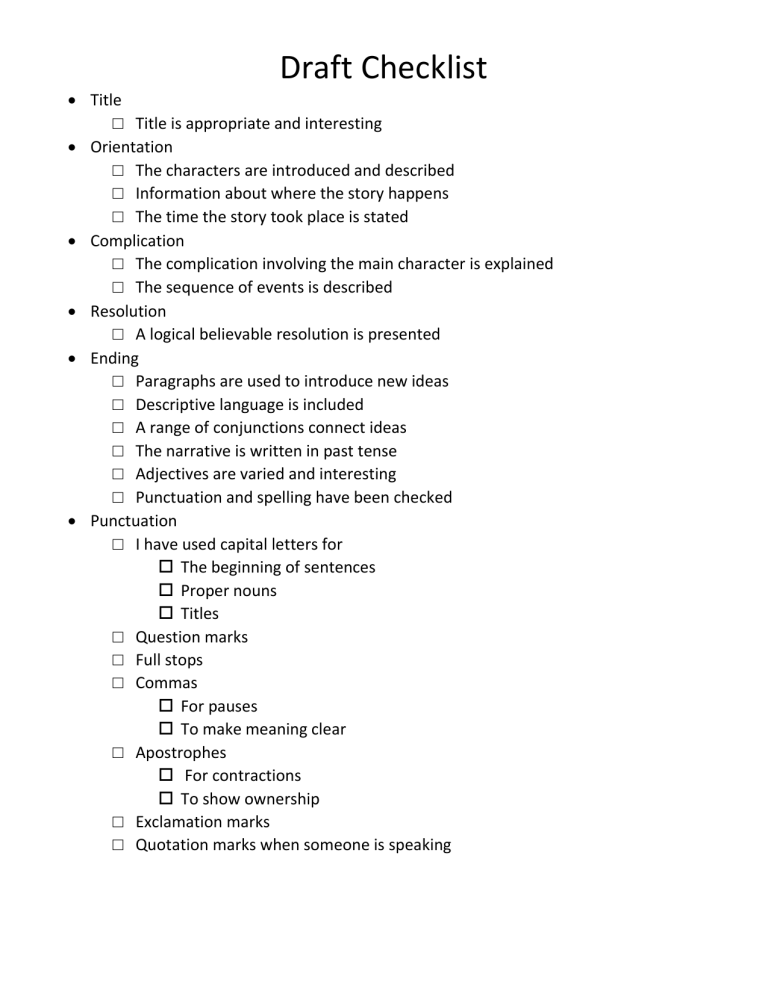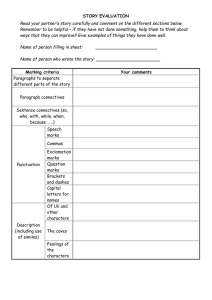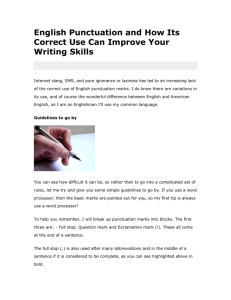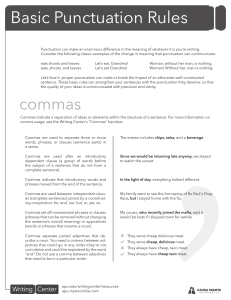
Draft Checklist Title □ Title is appropriate and interesting Orientation □ The characters are introduced and described □ Information about where the story happens □ The time the story took place is stated Complication □ The complication involving the main character is explained □ The sequence of events is described Resolution □ A logical believable resolution is presented Ending □ Paragraphs are used to introduce new ideas □ Descriptive language is included □ A range of conjunctions connect ideas □ The narrative is written in past tense □ Adjectives are varied and interesting □ Punctuation and spelling have been checked Punctuation □ I have used capital letters for The beginning of sentences Proper nouns Titles □ Question marks □ Full stops □ Commas For pauses To make meaning clear □ Apostrophes For contractions To show ownership □ Exclamation marks □ Quotation marks when someone is speaking Draft Checklist Spelling □ Checked the spelling of unknown words □ Not confused words that sound the same □ Used the correct endings for plurals Grammar □ Used a variety of verbs □ Used the correct verb tense □ Suitable nouns □ Appropriate pronouns □ Interesting adjectives Writing □ It makes sense □ It is easy to understand □ Paragraphing is appropriate □ There are no double negatives. Dialogue □ Direct quotes begin with capital letters □ When quotes are interrupted into two parts with words like “he asked” pr “the teacher demanded,” the second part begins with a lowercase letter. □ When writing dialogue, all punctuation marks at the end of the quotation go inside the quotation marks. □ Do not put a period (full stop) at the end of a quotation followed by things like she said etc. Use commas, question marks, and exclamation marks but not periods. Periods end sentences. □ Make a new paragraph (indent) when a different person speaks □ Uses other words instead of said Indirect characterisation □ Use STEAL acronym to create character □ Shows character traits □ Minimal amount of telling character traits




